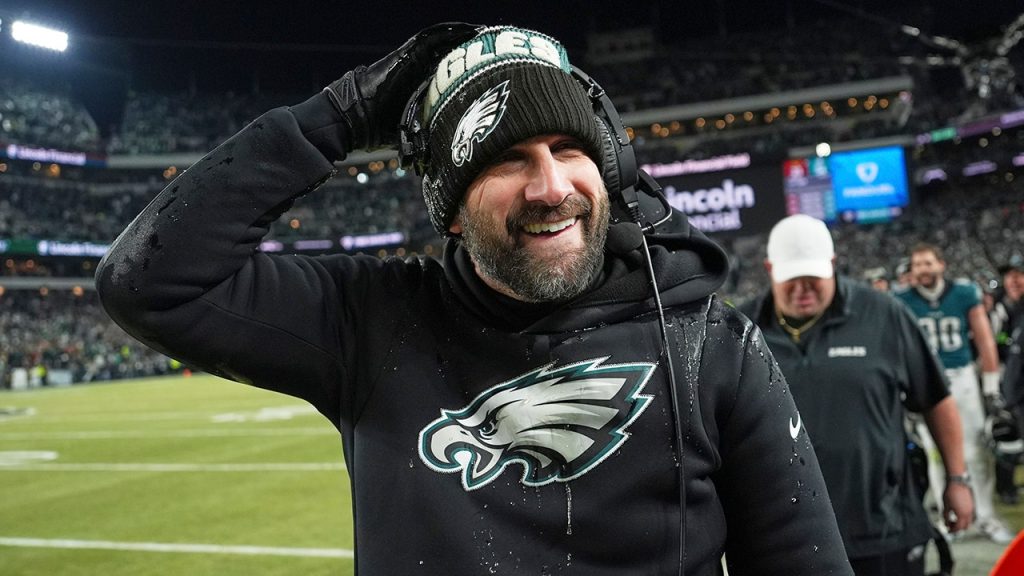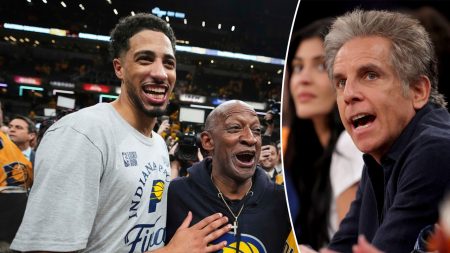The Empire State Building, an iconic symbol of New York City, found itself embroiled in controversy once again following its decision to illuminate its facade in Philadelphia Eagles green after the team’s NFC Championship victory over the Washington Commanders. This act of support, reminiscent of a similar gesture two years prior when the Eagles clinched a Super Bowl berth, ignited a wave of criticism from New Yorkers who perceived the display as a betrayal of their city’s sporting loyalties. The fact that former New York Giants running back, Saquon Barkley, played a pivotal role in the Eagles’ triumph, scoring two touchdowns, added further insult to injury for Giants fans still reeling from a dismal season. The Empire State Building’s social media post acknowledging the lighting ceremony, while also stating their intention to honor the AFC Champion, did little to quell the rising tide of disapproval. This incident underscores the deep-seated rivalries and passionate affiliations that characterize the NFL landscape, particularly within the densely populated and sports-crazed Northeast.
The controversy surrounding the Empire State Building’s lighting choice highlights the complex relationship between sports, civic pride, and symbolic gestures. For many New Yorkers, the Empire State Building represents more than just a prominent architectural landmark; it embodies the city’s identity and its rich sporting heritage. Illuminating the building in the colors of a rival team, particularly one from the same division (NFC East), was seen as an affront to this identity and a symbolic endorsement of the opposing team’s success. The timing of the incident, following a particularly disappointing season for both New York football teams, further exacerbated the negative reaction. With the Giants and Jets languishing at the bottom of their respective divisions, New Yorkers were already grappling with feelings of sporting inadequacy, making the Empire State Building’s gesture seem all the more insensitive.
Adding fuel to the fire was the presence of Saquon Barkley, a former Giants star, in the Eagles’ lineup. Barkley’s departure from the Giants after the 2024 season was a contentious issue for many fans who viewed him as a symbol of hope for a struggling franchise. His instrumental role in the Eagles’ victory, scoring two crucial touchdowns, only served to deepen the sense of betrayal and amplify the negative reaction to the Empire State Building’s tribute. This incident demonstrates how the movement of players between rival teams can heighten existing tensions and inject an additional layer of emotional complexity into already fierce rivalries.
The Empire State Building’s attempt to mitigate the backlash by stating their intention to honor both conference champions fell on deaf ears. For many critics, the damage was already done. The symbolic act of illuminating the building in Eagles green, even if temporarily, was seen as an unforgivable act of disloyalty. This underscores the power of symbolic gestures and their potential to evoke strong emotional responses, particularly when they touch upon deeply held beliefs and affiliations. In the highly charged world of professional sports, where team loyalty borders on religious fervor, even seemingly innocuous actions can be interpreted as acts of betrayal or defiance.
The incident further illuminates the challenging landscape faced by New York football fans. The Giants, following a disappointing 3-14 season and the loss of Barkley, face an uphill battle to regain their former glory. Their solitary playoff appearance in the past eight seasons is a stark reminder of their struggles. The Jets, similarly mired in mediocrity, have not tasted playoff action since the 2010 season, leaving their fans yearning for a return to relevance. This prolonged period of underachievement has undoubtedly contributed to the heightened sensitivity surrounding the Empire State Building incident, as fans grapple with a sense of frustration and disillusionment.
The backdrop of these struggles further highlights the complex dynamics at play in the New York sports landscape. With both the Giants and Jets enduring prolonged periods of futility, the Buffalo Bills, although geographically removed from the city, have emerged as a potential source of hope for New York football fans. However, the Bills face their own challenges, including overcoming the perennial AFC powerhouse, the Kansas City Chiefs. The Empire State Building incident, therefore, serves as a microcosm of the broader anxieties and aspirations of New York football fans, caught between the disappointment of their local teams and the tantalizing possibility of vicarious success through another New York team. The incident ultimately reveals the deep emotional connection between fans, their teams, and the symbolic representations of their city’s identity.










